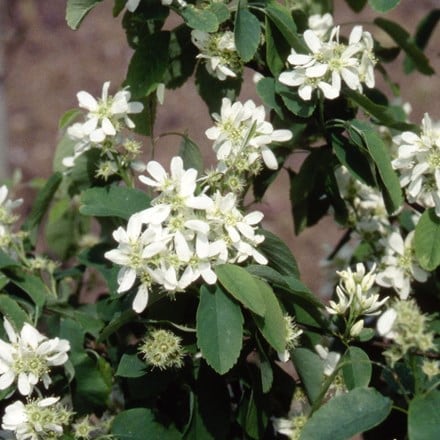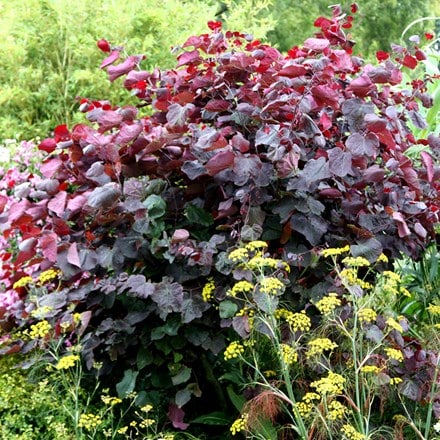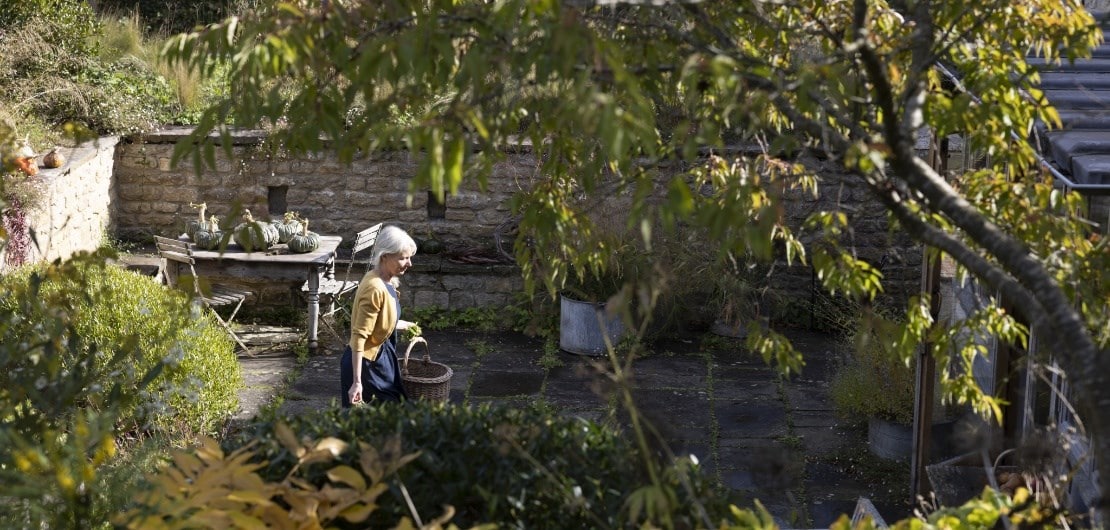
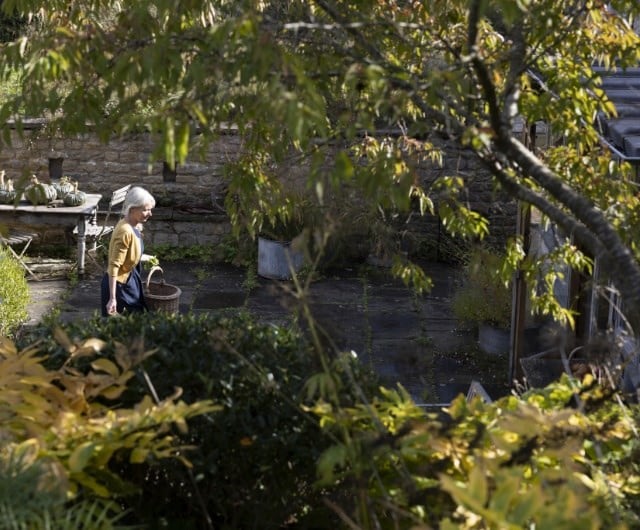
With careful planning and long-term vision, a well-placed tree (or two) will elevate a garden's planting scheme in more ways than one. Creating lasting beauty that changes with the seasons, trees add height, structure, foliage and form, establishing multidimensional layers that lift both the eyes and the spirits.
Beyond the aesthetics, trees offer tremendous benefits - even in quite small spaces. Living infrastructures that continuously enrich their surroundings, they're home to a huge assortment of wildlife, and a sought-after buffet bar for many more. Often described as 'the lungs of a garden', trees clean the air by hoovering up carbon dioxide and emitting oxygen. At the same time, they increase climate resilience in the most natural way, by protecting the plants beneath their canopy, while regulating the surrounding soil moisture and air temperature. All this while providing us with cooling shade, privacy from inquisitive neighbours, and shelter from the prevailing winds.
Despite all the benefits, many of us with modestly sized gardens are still a little wary of planting a tree, fearful that in time it may get too big for the space. It's true that careful selection is essential if you're going to get it right, but fortunately there are some wonderfully compact trees available - many of which can be contained in a large pot if necessary. If you'd like to know which are our favourites, then here's our shortlist.
Ornamental cherry trees (Prunus spp.)
A hugely lovely and diverse group of plants, flowering cherries come in a terrific assortment of shapes and sizes, including some wonderfully compact cultivars. Typically producing their pink or white blossom in astonishing abundance from early to mid- or even late spring (the exceptions to this rule are the autumn cherries - Prunus × subhirtella 'Autumnalis'), which flower intermittently from mid-autumn to early spring - typically during milder breaks in the winter weather.
If you're looking for year-round interest in a smaller space, one of the best is the Tibetan cherry (Prunus serrula). Bearing masses of dainty white blossom in spring, an ever-changing kaleidoscope of lightly dappled shade throughout the summer, rich autumn leaf colouring, and a bare skeleton of peeling, tiger-striped, cinnamon-brown bark that looks luminous in the low light throughout winter. It takes some beating.
Another notable cultivar, Prunus 'Amanogawa' has a narrow, columnar silhouette, so it's often planted to frame an entrance, or in lines to define paths and driveways. It also makes a wonderful focal point in tight spaces, growing to around 4m (12ft) in height, while maintaining a relatively small footprint.
Serviceberry (Amelanchier spp.)
Bearing clouds of star-shaped white flowers in early spring, attractive colour-changing foliage that excels itself in autumn, and a plethora of berries for the birds, these muti-stemmed, shrubby trees are tough, adaptable and easy to grow.
Reaching just 4m (12ft) or so in height, Amelanchier lamarkii is one of the most adaptable and elegant options. With an open habit and compact frame, snowy June berry takes up relatively little space, and its malleable nature allows formative pruning to better suit the garden's style and surroundings.
Taller in height, and with a slimmer profile, Amelanchier alnifolia 'Obelisk' (PBR) has an upright habit, which makes it ideal for adding structure and vertical interest to pint-sized planting schemes. It can also be grown in large, wide-based pots on the patio, or beside a doorway.
Japanese maples (Acer spp.)
Cultivated for centuries and still in demand today, Japanese maples are undeniably lovely. Grown for their elegant form and handsome foliage, which comes in a terrific assortment of shapes, sizes and colours, this large and versatile bunch will often take centre stage in small-scale gardens.
If you're wanting to add height and colour, then Acer palmatum 'Bloodgood' is an excellent choice. Growing to 4m (12ft) or so in height, it's relatively upright in stature, and throughout the warmer months, it's smothered in deep crimson foliage, which turns bright scarlet in autumn before being shed for winter.
Prized for its exceptional autumn leaf colour and elegant form, Acer palmatum 'Osakazuki' is another wonderful, low-maintenance specimen tree. Although a little taller than 'Bloodgood', its slow growth and graceful, rounded shape allow it to be easily managed in compact spaces or containers.
For courtyard gardens, or even sheltered balconies, Acer palmatum 'Dissectum' makes a terrific choice. The bright, almost lime green leaves are finely divided, giving them a filigree appearance that adds textural interest when teamed with solid leaf shapes. Compact, slow-growing and forming a mound that is typically wider than it is high, it's a beauty.
In comparison, the foliage of Acer × freemanii 'Morgan' is relatively big and chunky - matching the plant's larger frame and eventual stature. Growing to 12m (40ft) in height and 8m (25ft) or so in width, it does need a bit of space to spread, but with selective pruning, its crown can be raised as it matures. If space allows, it will form a lush green summer canopy, and put on a tremendous display in autumn when fiery red and orange leaf colours intensify as the temperatures drop.
Birch (Betula)
Elegant and iconic additions to gardens large and small, birches tend to grow quickly, so they're perfect if you want relatively fast results. Often admired for their distinctive bark, which is particularly eye-catching after the leaves have been shed and the skeletal stems are laid bare.
Growing to 12m (40ft) in height, Betula utilis subsp. jacquemontii is a particularly fine example, with chestnut brown bark that becomes paler year on year, typically appearing silver-white in under 10 years. It looks wonderful when lit by a low winter sun, and can be planted in small clusters or drifts in larger spaces if you're after a more naturalised effect.
Alternatively, where space is really in short supply, the smaller Betula pendula subsp. pendula Fastigiata Joes ('Jolep 1') will add height (to 5m or 15ft) and structure without too much density. Smothered in small ovate leaves that rustle in the gentlest breeze, early-season interest is established with the pendant catkins (elongated flower clusters) that drip icicle-like from the bare branches.
Redbud (Cercis)
Redbuds are instantly recognisable in early spring, when their bare stems are studded with clusters of pea-like, pink or white flowers. Their heart-shaped leaves are also attractive, and appear soon after the flowers, often coming through with a pinkish flush. Easy to care for while offering a long season of interest throughout the year, many Cercis species will mature to a modest height, making them perfect for the smaller garden.
If you like to pep up the planting scheme with some colourful foliage, then Cercis canadensis 'Alley Cat' will certainly make a splash with its outstanding green and cream markings. Growing to a height of around 5m (15ft), its spreading branches form an umbrella-like canopy as it matures.
Growing to just 3m (10ft) or so in height, Cercis chinensis 'Avondale' is perfect pots or restricted spaces, where its spring flowers, heart shaped lush green leaves, and butter-yellow autumn foliage colour can be admired.
If you prefer white flowers, put Cercis canadensis 'Texan White' on your wishlist. As the saying goes, "everything's bigger in Texas" - the flowers of this gorgeous redbud are also super-sized in comparison to its close cousins. Reaching just 4m (12ft) or so in height and spread, it may be small in stature, but it puts on a rip-roaring show.
How to position trees in smaller gardens
Trees are long-lasting and as they grow, they're going to make a big impact, so it's important to get their positioning just right. Here are our top tips.
Factor in things you can't change
For long-term health and vitality, a tree needs to be happy. That means a sun-loving tree won't flourish if it's surrounded by tall buildings that block the light, or a tree that needs a sheltered spot won't do well if planted in a wind tunnel. Your soil type should be taken into consideration too, as while some trees prefer heavy clay soils, others will struggle unless planted in light, freely-draining conditions.
Location, location, location
Whether using your tree to act as a focal point, a backdrop, or lending height, structure and body to an existing planting scheme, careful placement is key. Trees can create privacy, making ugly views or nosey neighbours a thing of the past, or they can act as a buffer against noise, wind or pollution. Thoughtful placement can define spaces, frame views, and establish a sense of scale and structure while anchoring your garden into the landscape beyond. Therefore, take time to consider what you want from your tree - and where it should be planted to achieve this.
Link your tree to the rest of the garden
Where possible, avoid tucking your tree too close to a boundary. Instead try to make it an integral part of the garden with interesting underplanting. In borders, mounding shrubs beneath the tree's canopy will add definition and contrast, while tall, slender perennials (like foxgloves) will help draw the eye upwards. A carpet of shade-loving ferns and low-growing woodlanders can be used to bring a naturalised 'been here forever' feel to the mix.
Whether planting in a mixed border, or as a stand-alone specimen in a lawn, scattering the area beneath with spring-flowering bulbs will add some early colour to the mix.
Planting and caring for your new tree
Good planting will make a big difference to how well a tree settles in and grows on over the years. If you'd like to get your tree off to the best possible start, here's how it's done.
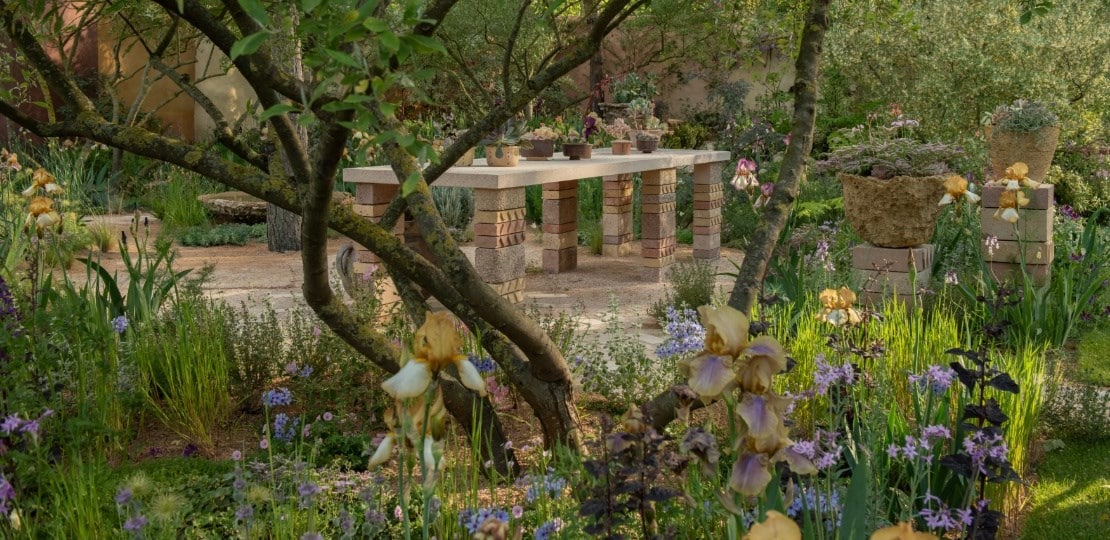
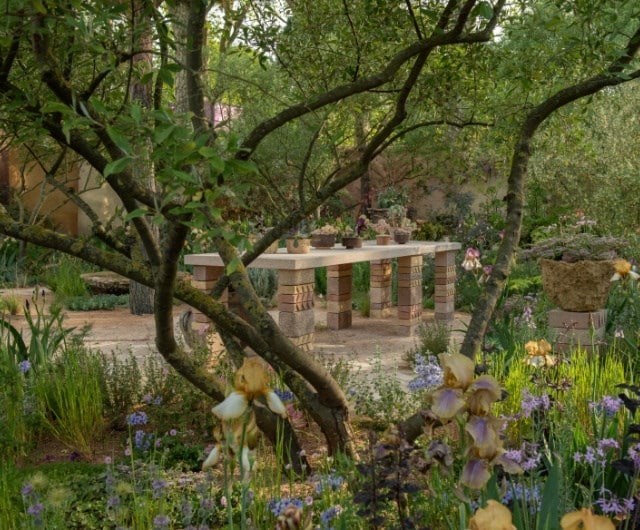
A few planting tips
The key to successful tree planting is good soil preparation, so remove all weeds from the surrounding area before digging in lots of composted organic matter.
Make sure your plant has been really well watered, then dig a hole roughly the same depth as the rootball, but two to three times as wide as its diameter. The aim is to encourage the roots to spread outwards rather than downwards.
Ease the plant from its pot and place it in the hole. Using a bamboo cane or tree stake, lay this across the top of the soil/rootball/soil to make sure they're level. If not, you'll need to add or remove some soil accordingly.
Gently tease out the roots. Don't worry too much if you tear some, as this will encourage new growth.
Sprinkle some mycorrhizal fungi onto the rootball before finally placing the tree into the hole. Stand back and make sure that its nicest side is the one that will be seen the most. If necessary, turn it around until it looks its best.
Using the excavated soil, fill in around the sides, gently firming it down as you go. The trick is to remove any air pockets, but not make it too compacted.
Water thoroughly, then apply a generous 5cm (2in) layer or organic mulch, making sure to leave a collar around the base of the main stem.
In exposed positions, you may initially need to provide a stake to prevent wind rock. Make sure to use a tree tie with a spacer to prevent rubbing, and allow some flex when tightening. If you've rabbits or mice in your area, you may also consider fitting a tree guard to protect the stem from nibbles.
Aftercare for newly planted trees
Keep your tree well watered for its first year - especially if it's been planted in warmer weather.
Keep the surrounding area free of weeds. If planted in a lawn, maintain a turf-free zone, 1.2m (4ft) in diameter around the base of the stem.
Check tree ties regularly to make sure they've not become too tight or are rubbing against the tree's stem.












